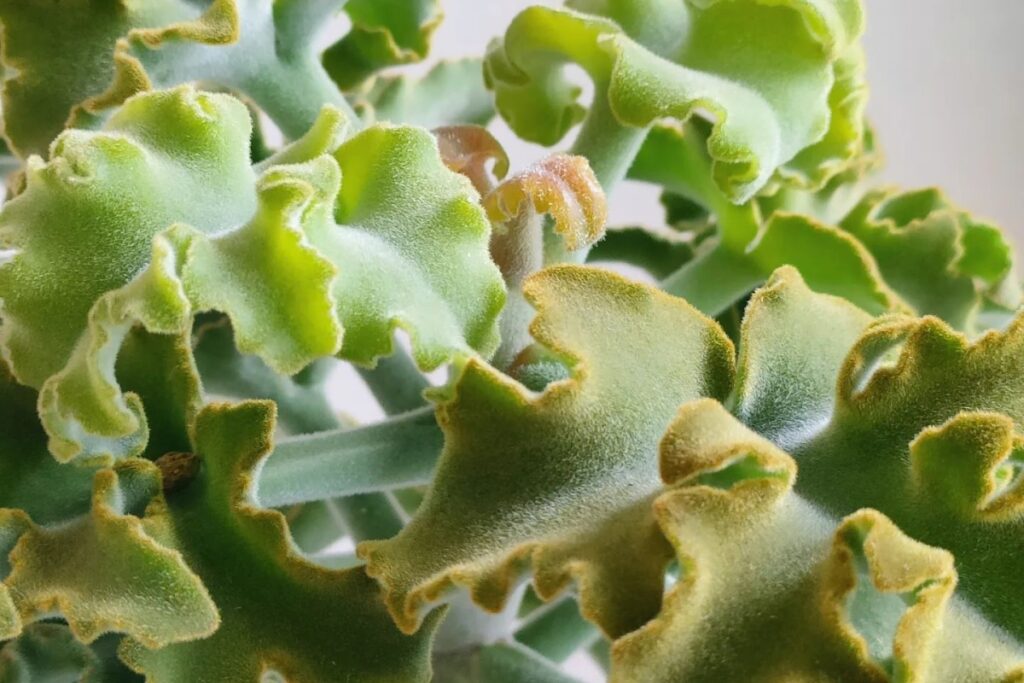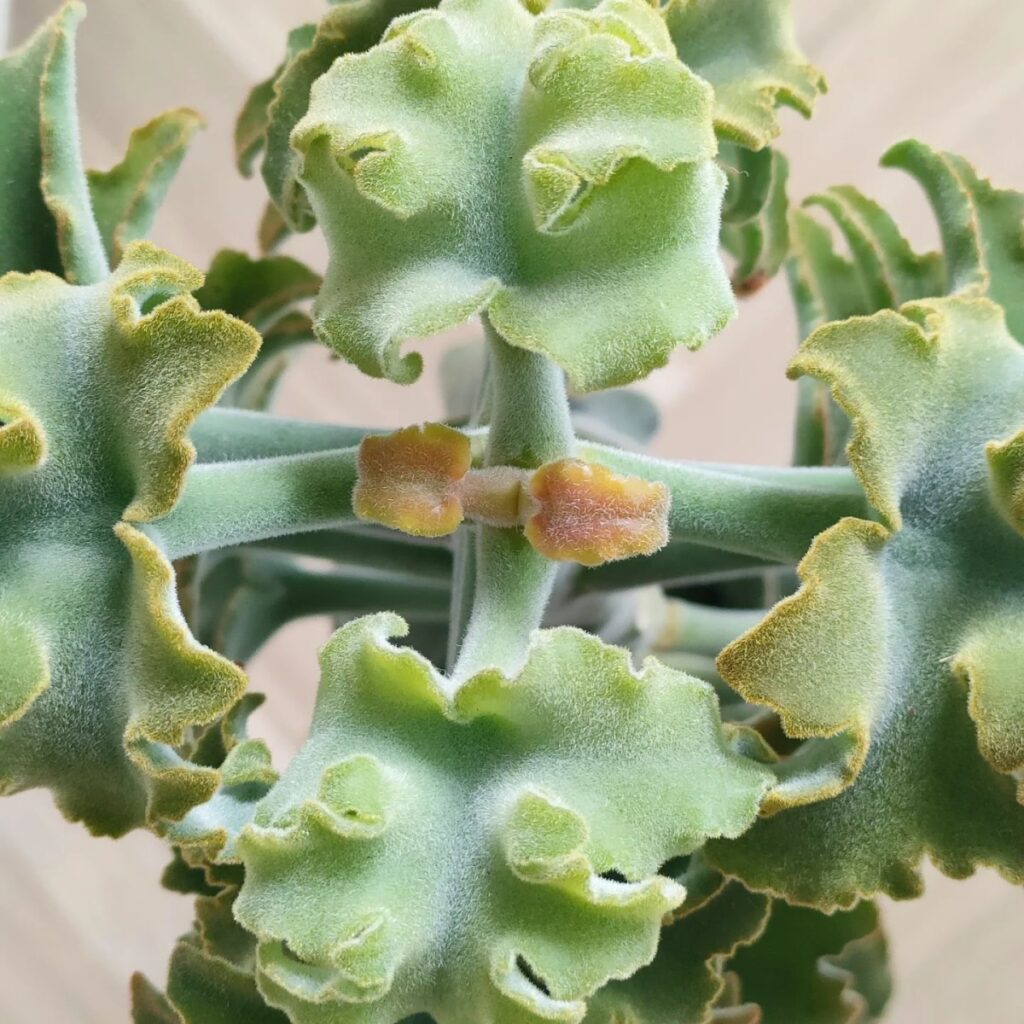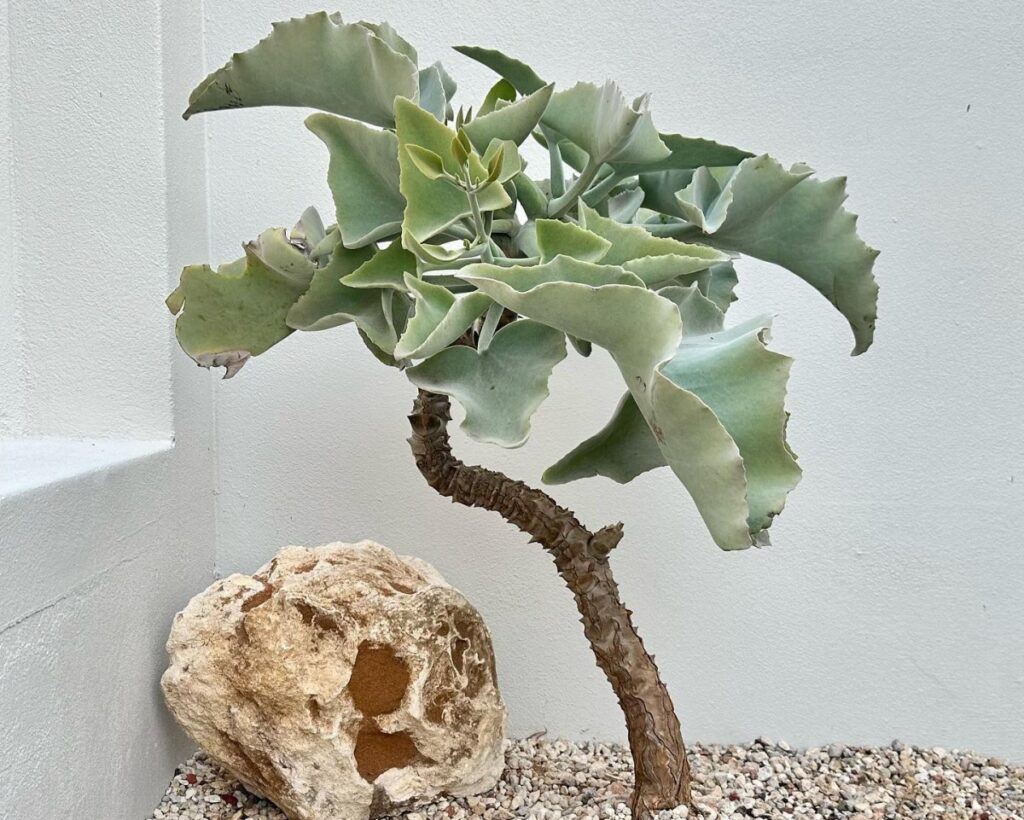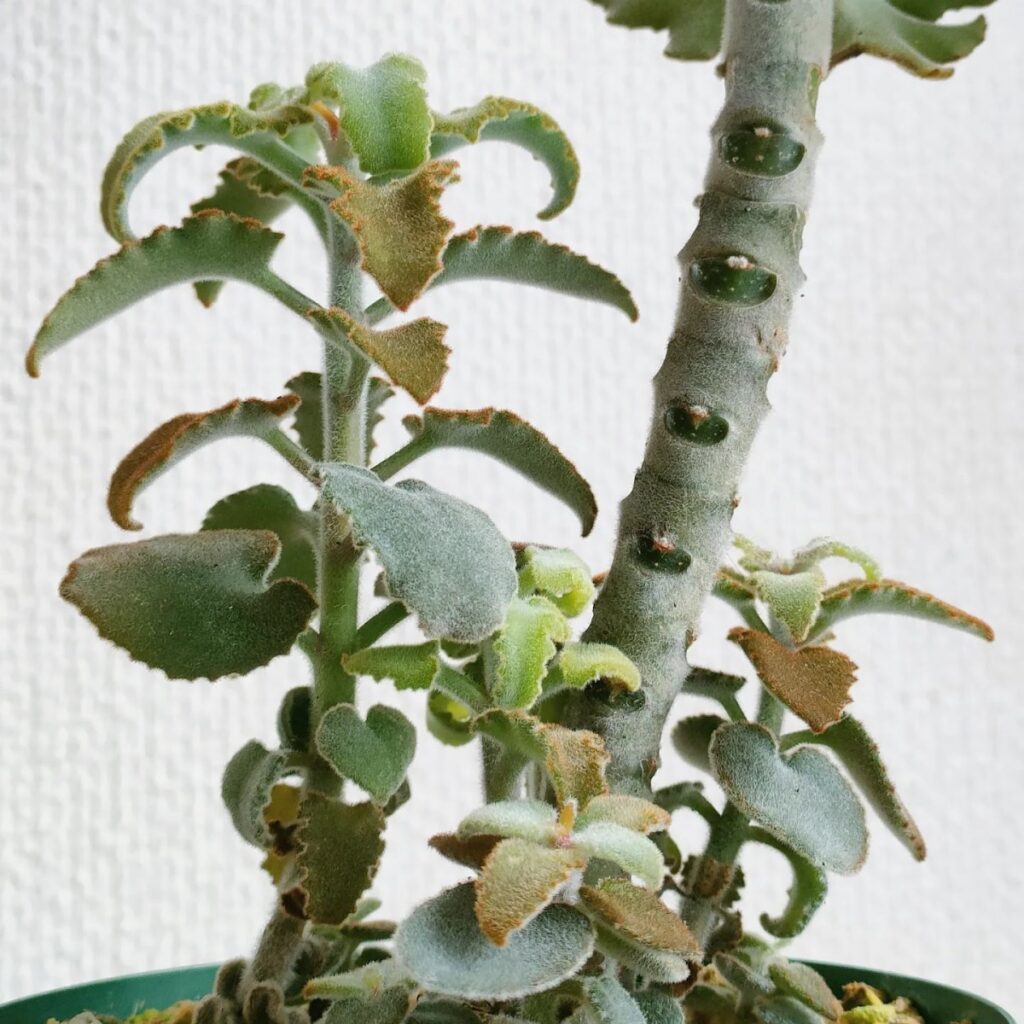Elephant Ear Kalanchoe: The Fuzzy Giant You Need in Your Garden
Get ready to be swept off your feet by the showstopping Elephant Ear Kalanchoe! This velvety succulent shrub is like no other, towering up to a majestic 12 feet tall and flaunting enormous fuzzy leaves that’ll make your jaw drop. With its stout, sturdy stem and irresistibly touchable foliage, this bad boy is sure to be the envy of your neighborhood.
But the Elephant Ear doesn’t just bring good looks to the table. During winter, it treats you to a burst of dainty urn-shaped blooms in dreamy shades of greenish-pink and yellow-green. Talk about a plant that keeps on giving!

Related Post:
40+ Kalanchoe Lower Classifications With Pictures
Contents
About the Elephant Ear Kalanchoe
Let’s take a closer look at what makes this succulent sensation so special, shall we? Those iconic leaves are the real showstoppers, reaching up to 16 inches long and a foot wide. But it’s their thick, velvet-like texture and wavy, lobed edges that’ll have you utterly mesmerized.
As it matures into a tree-like specimen, the Elephant Ear Kalanchoe (scientifically known as Kalanchoe beharensis) maintains an elegant, upright form that commands attention in any garden or indoor space. Swoon!
How To Care For Elephant Ear Kalanchoe
Light
The Elephant Ear adores basking in the sun’s golden rays, but too much of a good thing can be harsh. Those big leaves are sensitive souls that may get crispy in direct, intense light. A lightly shaded spot is ideal for keeping this beauty happy outdoors.
If growing it inside, an ultra-bright, sunny window is perfection. Or treat it to an LED grow light to ensure it soaks up enough rays to thrive.

Watering
Here’s the thing about these fuzzy giants – they’re succulents through and through, meaning they don’t need a ton of water. Too much H2O will quickly lead to rot and other nasty issues.
The golden rule? Only rehydrate your parched pal once the soil has completely dried out. During the peak growing season, you may need to moisten the mix every 7-10 days. But in winter, it can happily go 3-4 weeks between drinks.
Soil
Like most succulents, the Elephant Ear craves a quick-draining soil mix. A blend formulated for cacti and succulents is perfect for preventing soggy roots and rot. You can also whip up your own fast-draining medium by combining equal parts potting soil, perlite or sand, and compost or coco coir.

Fertilizer
You’d think a plant this vigorous would be a heavy feeder, but surprise! The Elephant Ear Kalanchoe is actually quite the low-maintenance beauty. It can certainly thrive without any added nutrients.
That said, an occasional meal of balanced liquid fertilizer or slow-release pellets during the growing season will give your leggy lady some extra oomph and bushier growth. Just go easy on the feeding and stick to a diluted fertilizer to avoid burning the roots.
Temperature & Humidity
These sun-worshippers adore warm conditions and can’t get enough of those balmy summer days. But they’re also pretty chill when temps dip, able to tolerate cold spells down to around 55°F. Any lower than that, and your fuzzy friend will need to come inside for the winter.
As for humidity, the Elephant Ear is easygoing and unfazed by dry air. No need to mist or run a humidifier for this low-key succulent.
Pests and Problems
Crave-worthy as it is, the Elephant Ear Kalanchoe doesn’t typically attract many pests or diseases. That velvety foliage helps deter most insects. But you’ll still want to keep an eye out for mealybugs, aphids, or spider mites trying to hitch a ride.
At the first sign of an infestation, give your plant a gentle wipe-down using insecticidal soap, neem oil, or your go-to organic pest remedy. With proper preventative care, this hardy plant can avoid most issues.
Pruning
Part of the Elephant Ear’s appeal is its naturally sculpted, tree-like form. But you may need to do a little light pruning from time to time to remove any dead or damaged stems or leaves.
Use clean, sharp pruners to snip off unsightly growth whenever needed. This also helps promote a lush, full plant by allowing sunlight and air to better circulate.
Potting and Repotting
In its native habitat, the Elephant Ear Kalanchoe has plenty of room to stretch its massive limbs. But when growing it as a potted specimen, you’ll need to size up its accommodations every few years.
Be sure to use a well-draining container with ample drainage holes, and repot in early spring before its main growth period. Gently spread the root ball and add fresh succulent soil, leaving room for it to expand.
Elephant Ear Kalanchoe Propagation

One of the coolest things about the Elephant Ear is how easy it is to multiply your collection! You can propagate new plants from either stem or leaf cuttings using these simple steps:
- Use clean, sharp pruners to snip off healthy stem segments or full leaves
- Allow the cuttings to callus over for a few days before planting
- Once calloused, stick the cutting upright in a fresh succulent potting mix
- Lightly mist the soil frequently until roots form and new growth emerges
- Then pot up the babies individually and care for them like mature plants
With its sheer showmanship and virtually foolproof care, the dazzling Elephant Ear Kalanchoe is a must-have for enhancing your greenery game. Those gigantic, fuzzy leaves are like a siren call to touch and admire them daily! So what are you waiting for? Bring one of these beauties home and give your green thumb an epic new challenge.
